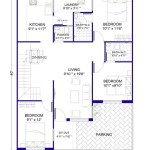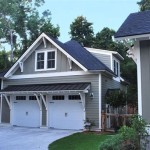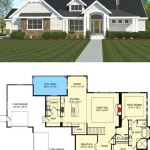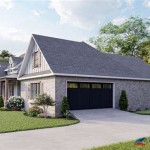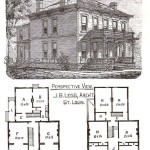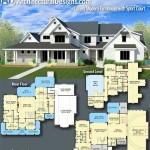Lake House Plans on Sloped Lots: Design Considerations and Opportunities
Building a lake house presents a unique set of design challenges and opportunities, particularly when the property features a sloped lot. While a flat lot may seem simpler to develop, a sloped lakeside property often provides breathtaking views and a connection to the natural landscape that is unmatched. Successfully integrating a lake house design into a sloped lot requires careful planning, innovative architectural solutions, and a thorough understanding of the site's characteristics.
The inherent challenges of sloped lots, such as accessibility, drainage, and potential for erosion, necessitate specialized lake house plans. These plans must address grading, foundation design, and structural considerations to ensure the stability and longevity of the building. However, the rewards of overcoming these challenges are significant, resulting in a lake house that is perfectly integrated into its surroundings and maximizes the enjoyment of the lakeside environment.
Maximizing Views and Natural Light
One of the primary advantages of a sloped lot is the potential for enhanced views. Lake house plans designed for such properties should prioritize maximizing these views from key living spaces, like the living room, dining area, and bedrooms. Strategic placement of large windows, decks, and balconies can create panoramic vistas of the lake and surrounding landscape. The design should also consider the orientation of the house relative to the sun's path, ensuring ample natural light throughout the day while minimizing glare and overheating.
The architecture should incorporate elements that frame the views, such as carefully positioned windows and strategically placed balconies. The use of expansive glass walls can bring the outdoors in, creating a seamless connection between the living spaces and the lake. Consider the sight lines from different areas of the house to effectively capture the best perspectives. A multi-level design can also be advantageous, with each level offering a different vantage point and potentially a unique outdoor space with its own view.
In addition to maximizing views, the design should also consider natural light. The orientation of the house should be optimized to capture sunlight throughout the day, while also minimizing the potential for glare and overheating. Overhangs, awnings, and strategically planted trees can help to control sunlight and keep the house cool in the summer. Skylights can also be used to bring natural light into interior spaces that may not have direct access to windows.
Furthermore, the design should incorporate the natural landscape into the view. Careful landscaping can enhance the beauty of the property and create a more immersive experience. Native plants can be used to blend the house into its surroundings and provide habitat for local wildlife. Consider incorporating natural elements, such as rocks and trees, into the design of the outdoor spaces.
Addressing Site Grading and Foundation Design
Site grading is a critical aspect of lake house design on a sloped lot. Grading involves reshaping the existing terrain to create a level building platform and to manage water runoff. Improper grading can lead to erosion, drainage problems, and even structural instability. A well-designed grading plan will minimize the amount of disturbance to the natural landscape and will ensure that the house is properly supported.
Foundation design is also crucial on sloped lots. Traditional slab-on-grade foundations are often not suitable, and alternative foundation systems, such as pier and beam, crawl space, or walkout basement foundations, may be required. Pier and beam foundations are particularly well-suited for sloped sites, as they allow the house to be elevated above the ground, minimizing the need for extensive grading and providing access for utilities. Crawl space foundations offer similar advantages and can also provide additional storage space.
A walkout basement foundation is another popular option for lake houses on sloped lots. This type of foundation allows the lower level of the house to be partially or fully exposed, creating a usable living space with direct access to the outdoors. Walkout basements can be used as recreation rooms, guest suites, or even home offices. The design should incorporate proper drainage and waterproofing to prevent moisture problems.
When designing the foundation, it is important to consider the soil conditions and the potential for erosion. Soil testing should be conducted to determine the bearing capacity of the soil and to identify any potential problems, such as expansive clay or unstable soils. Erosion control measures, such as retaining walls, terraces, and drainage swales, may be necessary to protect the foundation and the surrounding landscape.
Integrating the Lake House with the Landscape
A successful lake house design on a sloped lot should seamlessly integrate with the surrounding landscape. This involves considering the natural contours of the land, the existing vegetation, and the overall character of the site. The goal is to create a house that feels like it belongs in its environment, rather than one that is imposed upon it.
The architectural style of the lake house should complement the natural setting. Rustic designs, such as log cabins or timber frame houses, are often a good choice for lakeside properties. These styles tend to blend in well with the natural environment and can create a warm and inviting atmosphere. Contemporary designs can also be successful, particularly if they incorporate natural materials and clean lines that echo the shapes and textures of the surrounding landscape.
Landscaping plays a crucial role in integrating the lake house with the landscape. Native plants should be used whenever possible, as they are well-adapted to the local climate and require less maintenance. The landscaping should be designed to enhance the beauty of the property and to provide privacy and screening. Consider incorporating natural elements, such as rocks and trees, into the landscaping design.
Outdoor living spaces, such as decks, patios, and screened porches, should be designed to take advantage of the lake views and to provide comfortable areas for relaxation and entertaining. These spaces should be seamlessly integrated with the interior living spaces, creating a smooth transition between indoors and outdoors. The design should also consider the prevailing winds and the direction of the sun to ensure that the outdoor spaces are comfortable and usable throughout the year.
Access to the lake is another important consideration. A well-designed path or staircase should provide safe and easy access to the shoreline. The path should be designed to minimize erosion and to protect the natural vegetation. Consider incorporating features such as benches or observation points along the path to encourage people to stop and enjoy the scenery.
Ultimately, designing a lake house on a sloped lot is a balancing act. It requires careful consideration of the site's constraints and opportunities, as well as a creative approach to architectural design. By prioritizing views, addressing site grading and foundation design, and integrating the house with the landscape, it is possible to create a stunning lake house that is both functional and aesthetically pleasing.
Choosing the right materials is essential for a lake house, especially on a sloped lot. Durability is key, as these homes are often exposed to the elements. Consider materials that are resistant to moisture, pests, and extreme temperatures. Natural materials like wood and stone can provide a rustic and timeless aesthetic, blending the house seamlessly with its surroundings. When selecting roofing materials, consider options that can withstand strong winds and heavy snow loads, if applicable to the region.
Sustainability should also be a key consideration in lake house design. Implementing energy-efficient features can reduce the environmental impact of the house and lower operating costs. Solar panels can generate electricity, while rainwater harvesting systems can provide water for irrigation and other non-potable uses. Consider using sustainable building materials, such as reclaimed wood or recycled content products. Proper insulation and energy-efficient windows can help to reduce energy consumption and maintain a comfortable indoor temperature.
Working with an experienced architect or designer is crucial for successfully navigating the complexities of building a lake house on a sloped lot. A qualified professional can help to assess the site's characteristics, develop a suitable design, and ensure that the project is completed on time and within budget. They can also assist with obtaining the necessary permits and approvals from local authorities. Look for an architect or designer who has experience with lake house design and who understands the unique challenges of building on a sloped lot. They should be able to provide examples of their previous work and testimonials from satisfied clients.
Remember to factor in the cost of utilities when planning a lake house on a sloped lot. Site preparation can be more expensive, as grading and excavation may be required. Connecting to the municipal water and sewer lines can also be costly, especially if the property is located in a remote area. Consider alternative solutions, such as well water and septic systems, if necessary. It is important to obtain accurate estimates for all of the costs associated with the project, including site preparation, construction, utilities, and landscaping.

House Plans For A Sloped Lot Dfd Blog

A Guide To Sloping Lot House Plans

Plan 680136vr 4039 Sq Ft Lake House With 2 Story Great Room And Car Garage For A Side Sloping Lot

Lake Wedowee Creek Retreat House Plan

Plan 680211vr Lake House For A Rear Sloping Lot Under 2300 Sq Ft With Drive Garage

Sloped Lot House Plans Down Slope The Designers

Lake House Plans Waterfront Home Designs

Lakefront House Plans Sloping Lot Home Building 10246

3 Bedroom Small Sloping Lot Lake Cabin By Max Fulbright

Waterfront House Plans The Plan


